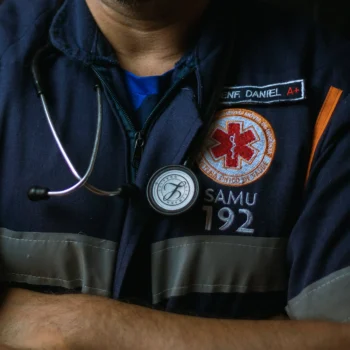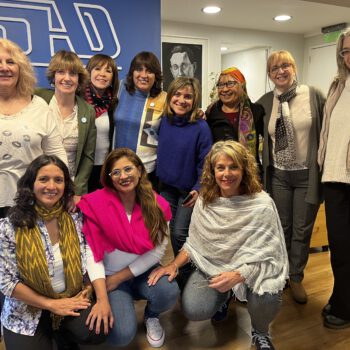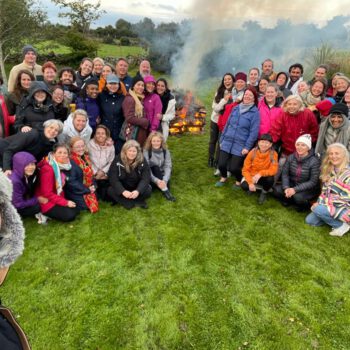Preface: Trauma affects individuals by causing a loss of response flexibility, disconnection from the self, a constricted worldview, and difficulty staying present. As a therapist, I guide clients to recognize these patterns, helping them reclaim control over their reactions, rebuild self-connection, and expand their perspective of the world. Through mindfulness and compassionate practices, healing becomes a journey of rediscovering resilience and living more fully in the present.

Photo by Francesco Ungaro on Unsplash
As a therapist, I’ve worked with countless individuals who carry the weight of trauma in their minds and bodies. While every story is unique, certain patterns emerge—ways in which trauma reshapes the self, relationships, and the ability to live fully in the present. My role is to help clients recognize and understand these patterns, allowing them to reclaim what trauma has taken from them.
One client, Elena, illustrates these concepts well. She came into my office for the first time with hesitant steps, her arms crossed protectively over her chest. The tension in her posture spoke volumes before she even said a word. Over the months that followed, Elena’s journey helped me to explain four major aspects of trauma to others: the loss of response flexibility, disconnection from the self, a constricted view of the world, and difficulty being present.
Loss of Response Flexibility
Elena often described feeling “stuck on autopilot,” reacting to situations in ways she didn’t fully understand or control. A raised voice—no matter the context—would immediately trigger panic, while unexpected changes in her routine left her feeling overwhelmed and helpless.
We explored this together, and I explained how trauma disrupts the nervous system’s ability to respond flexibly. In a healthy state, we can adjust our reactions based on the situation, but trauma locks us into survival modes—fight, flight, freeze, or fawn. These automatic responses, while protective during the traumatic event, become maladaptive when they persist long after the danger has passed.
Together, Elena and I worked to identify her triggers and how they tied to her past experiences. Grounding techniques, such as slow breathing and body awareness exercises, helped her create a pause between stimulus and response. Over time, she began to notice moments when she could choose her reactions, reclaiming a sense of agency.
Disconnection from the Self
During one session, Elena said something that stayed with me: “I don’t even know who I am anymore.” Trauma often severs our connection to ourselves, splitting us from our emotions, needs, and inner wisdom. For Elena, this showed up in ways both large and small—struggling to make simple decisions, like what to eat for dinner, feeling numb during happy moments, and ignoring her body’s signals of hunger or exhaustion.
We talked about how survival mechanisms can force us to suppress parts of ourselves to cope. For example, if crying brought criticism during her childhood, it made sense that Elena had learned to shut down her emotions. But this disconnection came at a cost, leaving her feeling fragmented and adrift.
To rebuild her connection to herself, I encouraged Elena to engage in activities that prioritised curiosity and gentleness over judgment. Journalling became a space for her to explore emotions she had long suppressed, while yoga helped her tune back into her body. Over time, she began to rediscover her inner voice, realising that she hadn’t truly lost herself—she had simply been out of reach.
A Constricted View of the World
Trauma also narrowed Elena’s perspective. She described the world as dangerous, people as untrustworthy, and happiness as fleeting. “What’s the point of hoping for anything better?” she asked me once, her voice heavy with resignation.
Trauma can distort how we see the world, teaching us to prioritize safety above all else. This often leads to black-and-white thinking: the world is either safe or unsafe, people are either good or bad. While this mindset is protective during traumatic events, it becomes limiting when carried into everyday life.
With Elena, I didn’t push her to adopt blind optimism; that would have dismissed her pain. Instead, together we focused on noticing small moments of safety and kindness—a warm interaction with a friend, the beauty of nature during a walk. Slowly, her perspective began to shift. She started to see that while danger and harm existed, so did connection, beauty, and hope.
Difficulty Being in the Present
Part of her trauma presentation included bouts of both anxiety and depression. I explained that trauma sometimes affects our sense of time: depression is often related to past situations while anxiety often has us in some future scenario. Elena stated that her mind was rarely still, always scanning for potential threats.
We discussed how trauma anchors us to moments of pain, trapping us in cycles of reliving and anticipating harm. The nervous system becomes hypervigilant, leaving little room for the here and now.
Somatic practices became a powerful tool for Elena. At first, it was challenging—her mind resisted staying in the present, darting back to memories or forward to imagined dangers. But with practice, she found moments of peace. Simple grounding exercises, like naming things she could see, hear, and feel, helped her root herself in the present. Slowly, she began to experience life as it unfolded, rather than through the lens of past pain or future fear.
The Road to Healing
Elena’s journey wasn’t linear, and there were moments of frustration and doubt. But over time, she began to embody resilience. She learned to pause before reacting, reconnect with her inner self, and expand her view of the world.
Trauma may have left its marks on her, but it no longer defined her. Elena’s story is a testament to the strength that exists within us all—the ability to face what feels unbearable and emerge stronger, more whole. As a therapist, I feel privileged to witness these transformations, helping my clients rediscover the parts of themselves they thought were lost forever.
Healing, I often remind them, isn’t about erasing the past. It’s about learning to carry it differently. Through awareness, compassion, and intentional action, we can reclaim our lives, one moment at a time.
Note: The name Elena has been used to exemplify the interactions I have had with clients over the years.




Comments are closed.